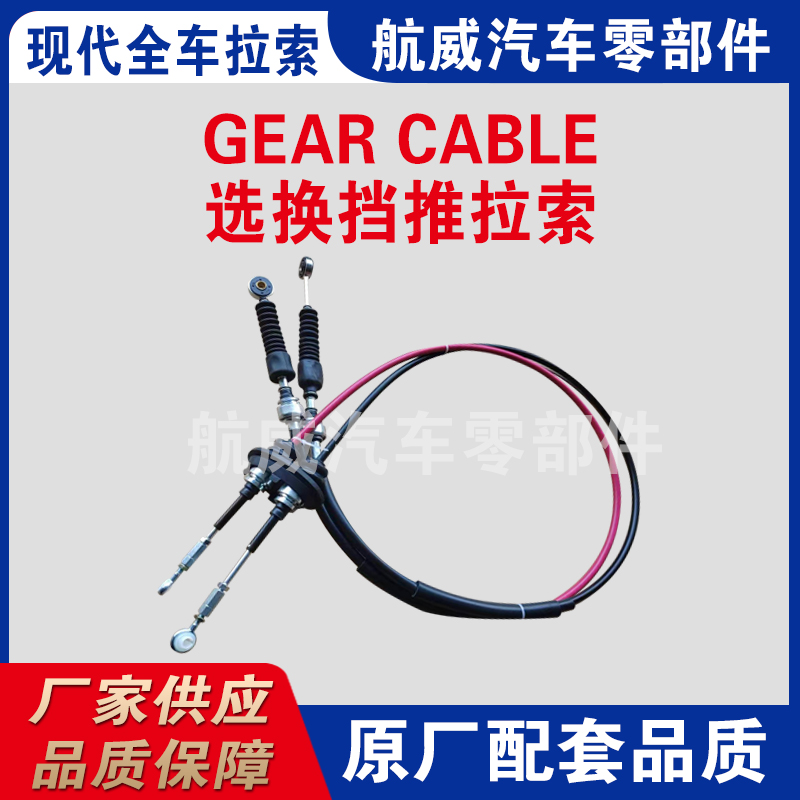adjusting the throttle cable
Adjusting the Throttle Cable A Step-by-Step Guide
The throttle cable is a crucial component in many vehicles and machines, linking the accelerator pedal to the engine's throttle body. Proper adjustment of the throttle cable is essential for optimal engine performance and response. Incorrectly adjusted cables can lead to poor acceleration, engine stalling, and inefficiency. This article will guide you through the process of adjusting the throttle cable, ensuring your vehicle operates smoothly.
Understanding the Throttle Cable
Before diving into the adjustment process, it’s important to understand the function of the throttle cable. When the driver presses the accelerator pedal, the cable pulls on the throttle body, allowing more air and fuel into the engine. This action creates power and propels the vehicle forward. However, if the cable is too tight or too loose, it can affect engine performance. A properly adjusted throttle cable ensures a smooth and responsive driving experience.
Tools Needed
To adjust the throttle cable, you will need the following tools - A socket set or wrenches - Pliers - A screwdriver - A measurement tool (ruler or caliper) - A helper (optional but beneficial)
Step-by-Step Adjustment Process
1. Locate the Throttle Cable Open the hood of your vehicle and locate the throttle cable. It usually connects the accelerator pedal to the throttle body. Follow the cable; you will usually find an adjustment point near the throttle body or at the accelerator pedal.
2. Check Cable Condition Before making any adjustments, inspect the throttle cable for signs of wear or damage. Look for fraying, kinks, or rust. If the cable is damaged, it’s advisable to replace it rather than just adjust it.
adjusting the throttle cable

3. Measure Current Slack To determine how much adjustment is needed, you first need to measure the current slack. Press the accelerator pedal lightly and observe how much play exists in the throttle cable. There should be a small amount of slack; too much slack can result in delayed throttle response.
4. Adjust the Cable Most throttle cables have an adjustment screw that can be turned to modify tension. Use your pliers or a screwdriver to turn the adjustment screw. If the cable is too loose, tighten it slightly; if it's too tight, loosen it a bit. Make small adjustments and check the cable tension frequently.
5. Test the Throttle Response After making adjustments, have a helper press the accelerator pedal fully to the floor while you observe the throttle body. Ensure that it opens completely and returns quickly when the pedal is released. This step is crucial, as you want to ensure that the throttle is responsive without any binding.
6. Final Check Once you are satisfied with the throttle response, take a test drive. Listen for any unusual sounds and observe how the vehicle accelerates from a stop. If everything feels smooth and responsive, you have successfully adjusted the throttle cable.
Maintenance Tips
To ensure long-lasting performance, regularly inspect the throttle cable and its components. Keep the cable lubricated and free from dirt and debris. This will not only prolong its life but also maintain a consistent throttle response.
Conclusion
Adjusting the throttle cable is a relatively simple process that can significantly improve your vehicle's performance. With the right tools and a bit of patience, you can ensure that your throttle cable is functioning optimally, providing you with the responsive and smooth driving experience you desire. Always prioritize safety, and when in doubt, consult a professional mechanic. A well-maintained throttle cable is crucial for both performance and safety on the road.
-
Workings of Clutch Pipe and Hose SystemsNewsJun.04,2025
-
The Inner Workings of Hand Brake Cable SystemsNewsJun.04,2025
-
The Secrets of Throttle and Accelerator CablesNewsJun.04,2025
-
The Hidden Lifeline of Your Transmission Gear Shift CablesNewsJun.04,2025
-
Demystifying Gear Cables and Shift LinkagesNewsJun.04,2025
-
Decoding Clutch Line Systems A Comprehensive GuideNewsJun.04,2025
